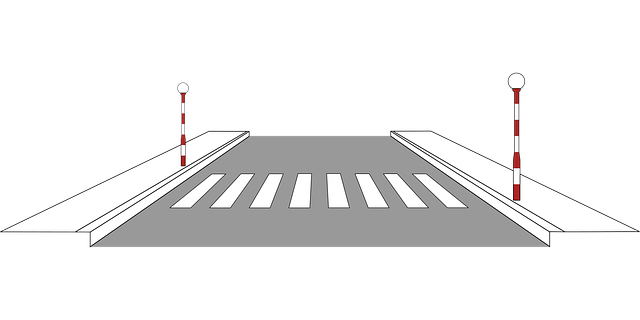Adhering to traffic rules, understanding rights/responsibilities, learning local laws, and prioritizing safe practices like signaling, maintaining distance, and avoiding distractions are essential Select Road Safety Tips. Pedestrians should wear reflective gear and drivers should adopt habits like reduced speed, phone-free driving, and keeping essentials handy. Staying alert, regularly checking surroundings, maintaining vehicle condition, and practicing defensive driving techniques are key tips for optimal road safety.
“Enhance your road safety with these essential tips. Understanding traffic rules and knowing your rights is paramount. Always wear protective gear, both as a pedestrian and driver, for an added layer of defense. Obeying speed limits and staying alert, free from distractions, can prevent accidents. Regularly maintain your vehicle and practice defensive driving techniques to anticipate risks. These simple yet effective road safety tips can safeguard you and others on the road.”
- Understand Traffic Rules: Know Your Rights and Responsibilities
- Wear Protective Gear: A Vital Step for Pedestrians and Drivers
- Obey Speed Limits: Safeguarding Lives on the Road
- Stay Alert: Avoid Distractions, Keep Your Senses Engaged
- Maintain Vehicle Condition: Regular Checks Ensure Safe Travel
- Practice Defensive Driving: Anticipate Risks, Make Safe Choices
Understand Traffic Rules: Know Your Rights and Responsibilities

Understanding and adhering to traffic rules is a fundamental aspect of road safety. It’s more than just knowing speed limits; it involves comprehending your rights and responsibilities as a driver or pedestrian. By familiarizing yourself with these regulations, you can ensure a safer experience for everyone on the road. Start by learning the local laws, including signaling turns, stop signs, and yield rules.
When behind the wheel, consider elderly driver safety considerations and be vigilant about maintaining safe following distances in traffic. In emergencies on the highway, knowing what to do can make all the difference. Always stay focused, follow speed limits, and avoid distractions like mobile phones while driving. Remember, road safety is a shared responsibility, and understanding these basic rules is the first step towards protecting yourself and others.
Wear Protective Gear: A Vital Step for Pedestrians and Drivers

Wearing protective gear is a crucial aspect of road safety that often goes overlooked, especially for pedestrians and drivers who may feel invincible behind the wheel or while walking along the streets. However, simple yet effective measures like wearing reflective clothing, helmets, and sturdy shoes can make a significant difference in ensuring your safety. For those on foot, being visible to drivers is key; reflectors and bright colours help in increasing your visibility during low-light conditions or adverse weather.
Drivers must also prioritise safe driving habits, especially when navigating challenging conditions like wet weather or flooded areas. Following road safety tips such as reducing speed, maintaining a safe distance, and refraining from using mobile phones while driving can prevent accidents. Moreover, it’s essential to exercise caution after consuming alcohol or drugs, as impaired judgment and reflexes can lead to dangerous situations on the roads. Precautions should also be taken when driving through flooded areas, like checking for depth and current strength, to avoid potential hazards.
Obey Speed Limits: Safeguarding Lives on the Road

One of the most effective ways to protect yourself while on the road is to obey speed limits. Speeding reduces your reaction time and increases the severity of accidents. It’s not just about avoiding fines; it’s about safeguarding lives, including your own and that of other drivers, passengers, and pedestrians. Always remember: the faster you go, the longer it takes to stop.
Understanding road signs and their meanings is another crucial aspect of road safety. Pay attention to speed limits, traffic signals, and signage indicating hazards or special considerations like pedestrian safety around schools zones. These tools are designed to guide and protect everyone on the road. Additionally, having roadside assistance essentials readily available can provide peace of mind and prompt help in case of emergencies.
Stay Alert: Avoid Distractions, Keep Your Senses Engaged

Staying alert is a vital road safety tip that cannot be overstated. When behind the wheel, it’s crucial to avoid distractions and keep all your senses engaged. This means putting away your phone, minimizing conversations with passengers, and avoiding any activity that takes your attention off the road. Regularly check your surroundings—the signs of a potentially dangerous driver ahead, changes in weather conditions, and even the behavior of other vehicles.
Focusing on safe driving habits, especially during wet weather or when using highway rest areas as solo drivers, requires constant vigilance. Keep your wipers clean for optimal visibility, maintain a safe following distance from other vehicles, and slow down accordingly to the weather conditions. Engaging your senses means being aware of every sound and sign that could indicate potential hazards, ensuring you’re always prepared to react swiftly and safely.
Maintain Vehicle Condition: Regular Checks Ensure Safe Travel

Regular vehicle maintenance is a vital part of road safety tips that often gets overlooked. Keeping your car in top condition ensures smooth and safe travel. Conducting routine checks on essential components like tires, brakes, lights, and fluids can prevent common traffic accidents and highway exit strategies from becoming hazardous situations. Always remember to check for wear and tear, ensuring each part functions optimally before hitting the road.
Understanding blind spots is crucial while changing lanes or merging onto highways, as these areas can hide other vehicles. By being aware of your vehicle’s blind spots and practicing defensive driving techniques, you can significantly reduce the risk of accidents. Regular maintenance also includes keeping your vehicle clean to avoid reduced visibility due to grime or debris, enabling you to react promptly to potential dangers on the road.
Practice Defensive Driving: Anticipate Risks, Make Safe Choices

Defensive driving is more than just following speed limits; it’s about anticipating risks and making safe choices on the road. When behind the wheel, stay alert and constantly scan your surroundings for potential hazards. This means being aware of other vehicles, pedestrians, and even the weather conditions. For instance, adopting safe driving habits for wet weather can significantly reduce accident risks. By adjusting your speed and maintaining a safe distance from other cars, you can ensure better control over your vehicle in adverse conditions.
Additionally, understanding how to choose the right car seat for toddlers is crucial for their safety. Proper seating arrangements for children are essential components of defensive driving. Always check for signs of a potentially dangerous driver ahead—aggressive behavior, reckless maneuvers, or distracted driving. Staying vigilant and making prompt decisions can help avoid collisions and ensure your well-being on the roads.
By adhering to these essential road safety tips, such as understanding traffic rules, wearing protective gear, obeying speed limits, staying alert, maintaining vehicle condition, and practicing defensive driving, you not only protect yourself but also contribute to a safer overall environment on the roads. Remember, your actions can make a significant difference in preventing accidents and saving lives. Stay vigilant and continue to follow these guidelines to ensure a secure future for all drivers and pedestrians.
